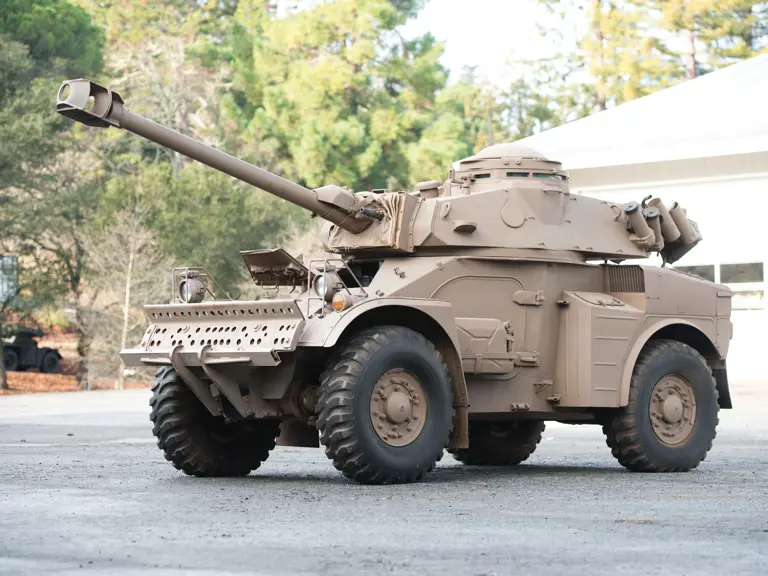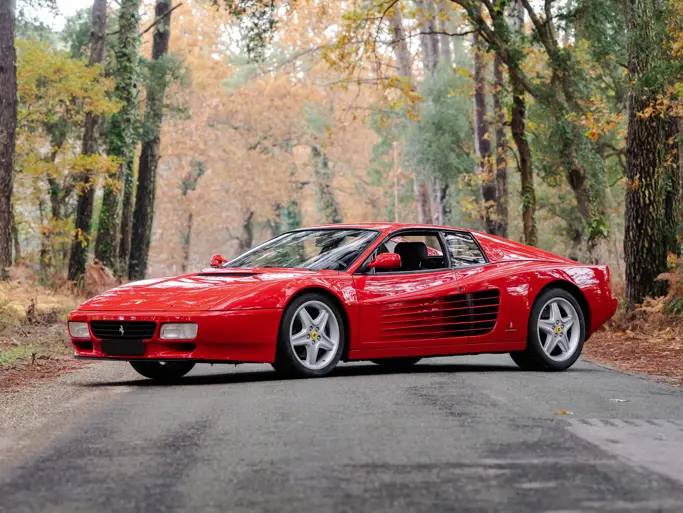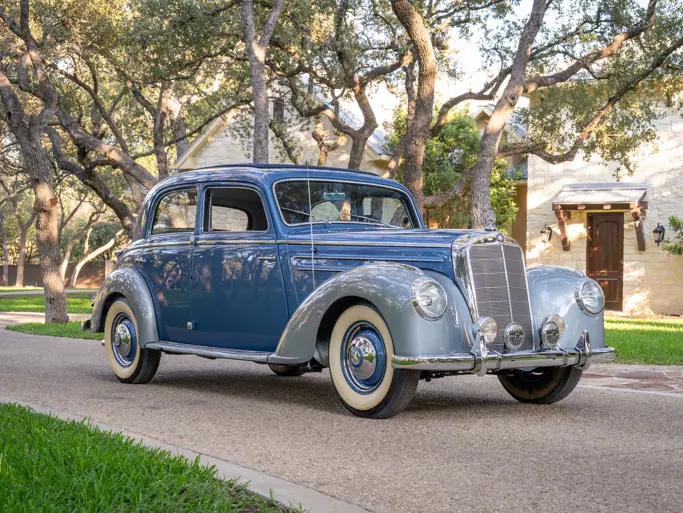 | Portola Valley, California
| Portola Valley, California
Weight: 6.6-tons (6,000-kg)
Length: 16’9” (5.12-m)
Width: 6’7” (2.01-m)
Height: 8’2” (2.5-m)
Crew: 3
Armor:
Max 0.47” (12-mm)
Weapons:
-Primary
1 x 90-mm GT2 rifled cannon
-Secondary
2 x 7.62-mm Browning machine gun
-Ammunition:
29 x 90-mm
2,000 x 7.62-mm
Engine: 2.5-liter 4-cylinder petrol, 118-hp
Power/weight: 17.9-hp/ton
Fuel Capacity: 37-USG (142-l)
Range: 280-m (450-km)
Speed: 53-mpg (85-km/h)
The vehicle being offered, Eland 90 Mk 7, is in very good condition. The exterior paint is excellent. The tires are in very good condition. All exterior lights are present. It runs and drives well using fuel from its own gas tanks. The interior needs a good cleaning and a slight cosmetic restoration. All gauges in the driver's instrument panel are present. The turret traverses manually.
The general procurement policy of South Africa has always been to choose wheeled vehicles. The wide, flat expanses of dry, hard terrain are uniquely inclined to the advantages wheeled vehicles have over the lack of need for the superior all-terrain capability of tracks. As a result, outside of the Centurion/Olifant tank, South Africa hasn’t used tracked vehicles in decades.
In 1961 the South African government negotiated a contract for 100 Panhard AML-60s, with the 150 90-mm turrets and components for an additional 500 vehicles to be built in South Africa. Sandock Austral won the contract for production and completed the 350 60-mm variants and 150 90-mm variants. The AML was known as the Eland in South African service, with the French-built ones being the Mk1. Mk2 was the first batch from South Africa.
Over time, improvements to the vehicle were incorporated as they were built. The Mk2 had an improved steering system, the Mk3 improved brakes, and the Mk4 an electrical clutch. All used the Panhard air-cooled engine, not necessarily suited for South African temperatures.
The Mk5 changed this, with the use of an Opel water-cooled engine. New hydraulic clutches, run-flat tires, suspension and radios were also added. Some 1,300 Elands were built by 1973, and 1,016 of them were upgraded to Mk6 standard, a complete rebuild between 1974 and 1975.
The last South African modification was the Mk7 which added new storage, a water tank, new optics for the commander and new brakes. 95-percent of the Mk7 was produced in South Africa. A further upgrade on offer, the Mk7DT changes the engine to a turbo-diesel, was for export only as the Eland was being replaced in the recon role by Rooikat and the fire support role by Ratel.
Known as ‘Noddy Cars’ by their crews, after the British toy character, they performed well in the Angolan Civil War, but as the -90 was an exercise in getting the biggest possible gun in the smallest possible chassis, care was required when firing.
Transport Cost to Storage: $660





